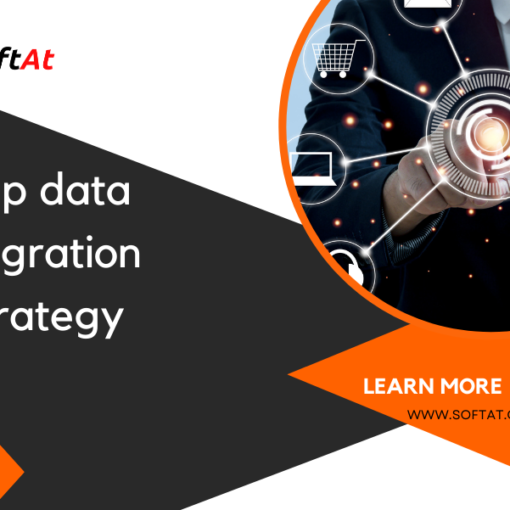In the dynamic landscape of business, where decisions can make or break success, having a robust planning tool is crucial. Hyperion Planning emerges as a beacon, empowering businesses with strategic foresight and efficient financial management.
1. Introduction
It goes beyond traditional planning solutions, offering a comprehensive platform that not only streamlines budgeting processes but also acts as a strategic tool for informed decision-making.
2. Decoding Hyperion Planning
2.1 What is Hyperion Planning?
Planning is an enterprise-level planning solution that facilitates dynamic budgeting, forecasting, and scenario planning. It provides organizations with the agility to adapt to changing market conditions.
2.2 The Role of Hyperion Planning in Business Strategy
Planning plays a pivotal role in shaping business strategy by providing a centralized platform for collaborative planning, ensuring alignment with organizational goals.
3. Key Features of Hyperion Planning
3.1 Dynamic Budgeting
Hyperion Planning’s dynamic budgeting capabilities enable organizations to create flexible budgets that adapt to changes, fostering agility in financial planning.
3.2 Scenario Planning Capabilities
The ability to create and analyze various scenarios empowers businesses to anticipate challenges and formulate strategic responses.
3.3 Seamless Integration with ERP Systems
Planning seamlessly integrates with ERP systems, creating a unified ecosystem that enhances data accuracy and reduces manual errors.
4. Benefits of Implementing Hyperion Planning
4.1 Enhanced Decision-Making
The data-driven insights provided by Planning empower decision-makers to make informed and strategic choices.
4.2 Streamlined Forecasting Processes
Planning streamlines forecasting processes, enabling organizations to anticipate market trends and proactively plan for the future.
4.3 Improved Data Accuracy
By reducing manual data entry and ensuring real-time integration, Planning enhances the accuracy of financial data.
5. Hyperion Planning Implementation: Best Practices
5.1 Engaging Stakeholders Early in the Process
Successful implementation begins with engaging stakeholders from different departments to ensure the tool aligns with diverse business needs.
5.2 Comprehensive Training Programs
A well-trained team is essential for maximizing the benefits of Planning. Comprehensive training programs facilitate smooth adoption.
5.3 Iterative Testing and Refinement
Iterative testing allows organizations to identify and address issues early in the implementation process, ensuring a more seamless transition.
6. Real-world Success Stories: Businesses Thriving with Hyperion Planning
6.1 Company A: Accelerating Financial Close Processes
Company A experienced a significant reduction in financial close times after implementing Planning, improving overall operational efficiency.
6.2 Company B: Driving Strategic Growth with Data-Driven Insights
Planning enabled Company B to leverage data-driven insights, driving strategic growth initiatives and enhancing market competitiveness.
7. Common Challenges and Solutions in Hyperion Planning Adoption
7.1 Overcoming Resistance to Change
Resistance to change is common. Effective communication and showcasing the benefits of Planning help overcome this hurdle.
7.2 Data Integration Challenges
Organizations may face challenges in integrating Planning with existing systems. A thorough understanding of data flows and collaboration with IT teams can address this.
8. Future Trends in Hyperion Planning
8.1 Artificial Intelligence Integration
The future of Planning involves leveraging AI to enhance forecasting accuracy and provide deeper insights into business trends.
8.2 Mobile Accessibility and Collaboration
Mobile accessibility will play a crucial role, allowing users to access and contribute to plans from anywhere, fostering collaboration in remote work environments.
9. Hyperion Planning vs. Other Planning Solutions: A Comparative Analysis
9.1 Anaplan
While Anaplan excels in certain areas, Planning’s robust scenario planning and ERP integration give it a competitive edge.
9.2 Adaptive Insights
Adaptive Insights focuses on ease of use, but Hyperion Planning’s advanced features make it a preferred choice for organizations seeking comprehensive planning capabilities.
9.3 IBM Planning Analytics
IBM Planning Analytics is a strong competitor, but Planning’s user-friendly interface and seamless integration set it apart.
10. Selecting the Right Hyperion Planning Version for Your Business
10.1 Scalability and Flexibility
Selecting a version that scales with business growth and adapts to changing needs is crucial for long-term success.
10.2 Alignment with Business Goals
The chosen version should align with the organization’s strategic goals, ensuring it supports rather than hinders growth.
10.3 User-Friendly Interface
A user-friendly interface enhances adoption. Choosing a version with an intuitive design facilitates smoother integration into daily operations.
11. Navigating the Implementation Journey: Tips and Pitfalls
11.1 Vendor Selection Considerations
Thoroughly researching and selecting a reputable Planning vendor is essential for a successful implementation.
11.2 Building a Cross-functional Implementation Team
Incorporating members from different departments ensures a holistic approach to implementation, addressing varied business needs.
12. Hyperion Planning in the Cloud: Advantages and Considerations
12.1 Accessibility and Security in the Cloud
Cloud-based Planning solutions provide accessibility and security, allowing businesses to adapt to modern work environments.
12.2 Cost Considerations
While the cloud offers flexibility, organizations must carefully consider the long-term costs associated with cloud-based Planning.
13. Testimonials: Voices from Hyperion Planning Users
13.1 Small Business Perspectives
Small businesses highlight the transformative impact of Planning, enabling them to compete on a larger scale.
13.2 Enterprise-Level Transformations
Enterprises share stories of Planning catalyzing large-scale transformations, positioning them for future success.
14. The Evolving Role of Planning in Modern Business
14.1 Aligning with Digital Transformation
Planning aligns with the ongoing digital transformation, ensuring businesses remain competitive in a rapidly changing environment.
14.2 Hyperion Planning in Remote Work Environments
As remote work becomes the norm, Planning facilitates seamless collaboration, ensuring teams stay connected and productive.
15. Conclusion
In conclusion, Hyperion Planning is not just a planning tool; it’s a strategic ally for businesses aiming for growth and success. By unlocking the power of data, fostering collaboration, and aligning with future trends, Planning sets the stage for a new era of business excellence.
Frequently Asked Questions
- Is Hyperion Planning suitable for small businesses?
- Yes, Planning offers scalability, making it suitable for both small businesses and large enterprises.
- How does Hyperion Planning enhance decision-making?
- Planning provides data-driven insights, empowering decision-makers to make informed and strategic choices.
- Can Planning be integrated with existing ERP systems?
- Absolutely, Planning is designed for seamless integration with ERP systems, ensuring a unified and accurate data flow.
- What sets Planning apart from other planning solutions?
- Hyperion Planning stands out with its robust scenario planning, ERP integration, and user-friendly interface.
- Is cloud-based Planning secure?
- Yes, cloud-based Planning prioritizes accessibility and security, providing a safe and flexible environment for businesses.
You may be interested in:
API Integration: Bridging the Digital Divide





